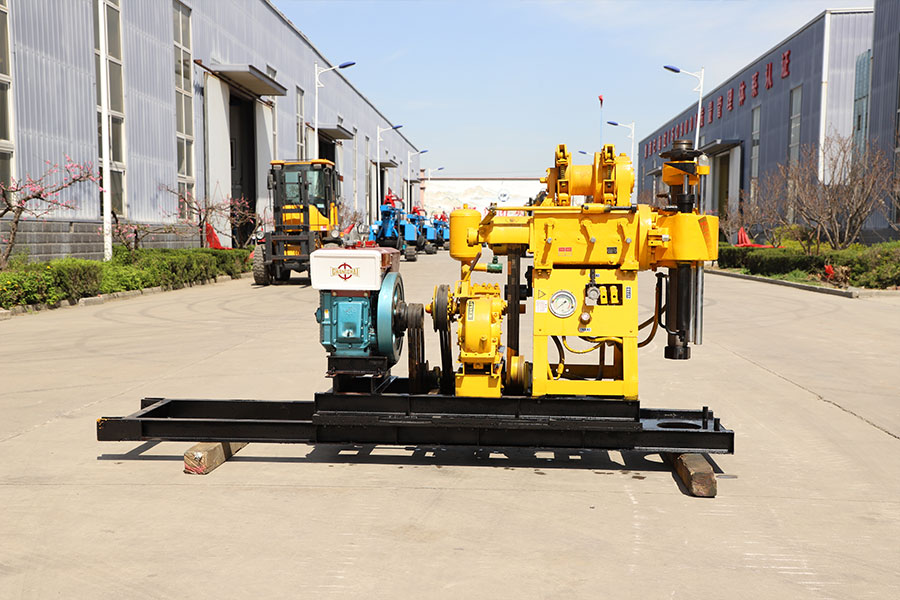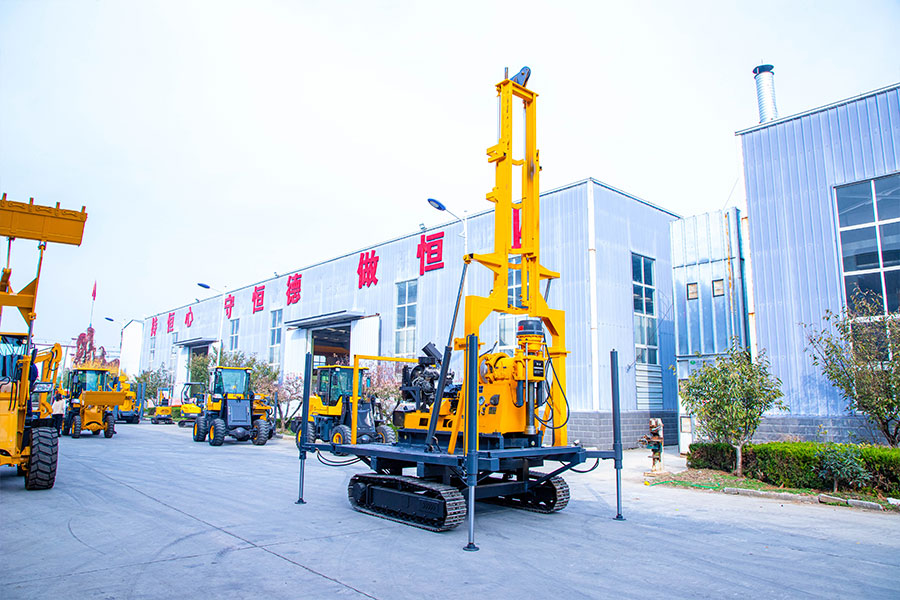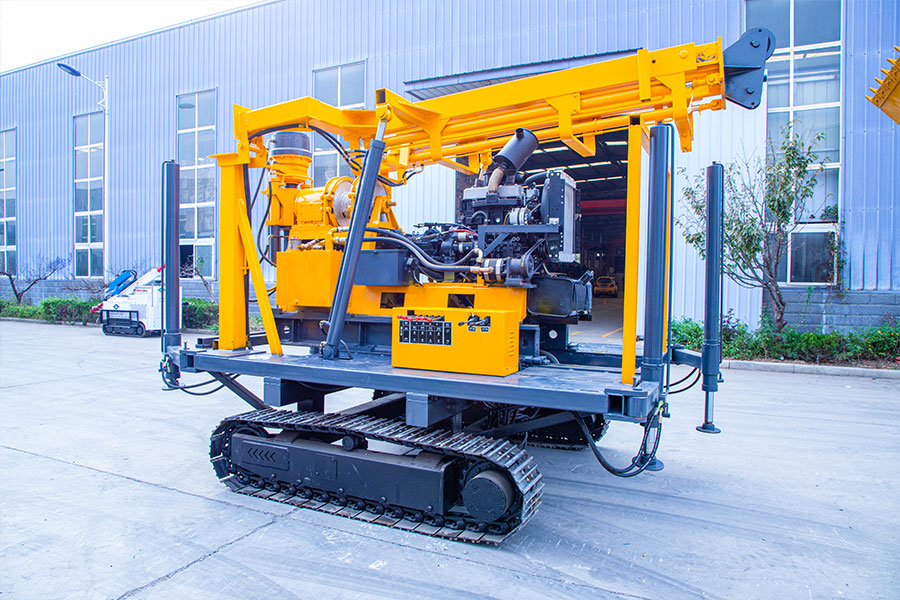


The working principle of a hydraulic drilling rig primarily relies on a hydraulic system to transmit power and control the drilling process. Here is a detailed explanation of the working principle of a hydraulic drilling rig:
Hydraulic Pump: Converts mechanical energy into hydraulic energy, typically driven by an internal combustion engine or an electric motor.
Hydraulic Oil Tank: Stores and supplies hydraulic oil.
Control Valve: Regulates the flow and direction of the hydraulic oil, adjusting the operating status of the hydraulic system.
Hydraulic Motor and Hydraulic Cylinder: Convert hydraulic energy into mechanical energy to drive various movements of the rig.
Drill Rod and Drill Bit: Used for drilling into the formation and retrieving core samples.
Power Transmission: The hydraulic pump draws hydraulic oil from the hydraulic oil tank and pressurizes it, sending it to the control valve.
Control and Regulation: The operator adjusts the flow and direction of the hydraulic oil through the control valve, thus controlling the movement of the hydraulic motor and hydraulic cylinder.
Mechanical Actions:
Rotational Motion: The hydraulic motor receives the pressure from the hydraulic oil and drives the drill rod and drill bit to rotate, performing the drilling.
Advancing Motion: The hydraulic cylinder pushes the drill rod and drill bit downward through the pressure of the hydraulic oil, increasing the drilling depth.
Cooling and Lubrication: The hydraulic oil not only transmits power but also cools and lubricates the drill bit and drill rod during the drilling process, reducing wear and overheating.
Coring and Cuttings Removal: During the drilling process, the drill bit cuts the formation material to form core samples or cuttings. The hydraulic system controls the lifting and lowering of the drill rod to retrieve the core samples.
Precise Control: The hydraulic system can precisely control the drilling speed, pressure, and torque, improving drilling efficiency and quality.
Efficient Transmission: Hydraulic transmission is highly efficient, capable of transmitting large power, and adaptable to various complex geological conditions.
High Degree of Automation: The hydraulic system is easy to automate, reducing manual operations and enhancing safety and work efficiency.
High Reliability: The hydraulic system has a simple structure, low failure rate, and low maintenance costs.
A hydraulic drilling rig converts hydraulic energy into mechanical energy through a hydraulic system, driving the drill rod and drill bit to perform drilling operations. The high efficiency and precise control of the hydraulic system make it significantly advantageous in geological exploration and mineral extraction, capable of handling various complex and demanding drilling tasks.